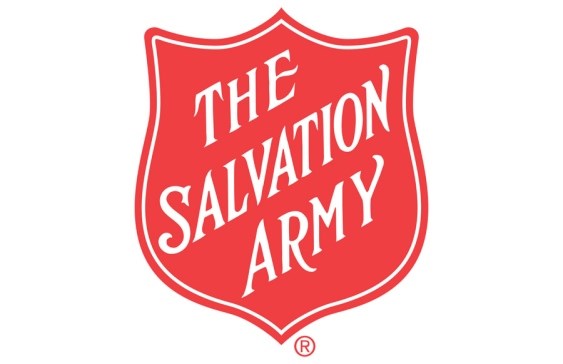The Prince George Salvation Army is bracing for a surge of people needing to use its food bank services in the coming weeks, and its stockpile of food is running low.
Maj. Neil Wilkinson said the Salvation Army hasn't seen a big increase in the number of people accessing their services yet, but they know it is coming with the number of people laid off and facing reduced hours.
"What is happening is people are just now running out of money. We're anticipating in the next couple weeks it's going to increase," Wilkinson said. "The biggest challenge we're facing is we can't get food. At our current demand level, I have about four days of food left. Then we'll run out."
The Salvation Army received a partial food shipment on Thursday, which should help restock the shelves, he said. But the four-day reserve compares to the three to four weeks of food the charity group had on hand in mid-March.
The problem is twofold, Wilkinson said. The Salvation Army's food bank typically relies heavily on donations of food items from the public and businesses, but they've had to stop taking food donations for safety during the COVID-19 pandemic.
"We don't want to encourage that kind of donation. It's not safe for the donor, and it's not safe for the volunteers receiving it," Wilkinson said. "Cash is the best way to support the food bank. We're purchasing food in bulk for the food bank, but our supply chains are challenged."
The same non-perishable goods that are sold out in grocery stores are what the Salvation Army needs to order for the food bank, he said.
"Eventually we hope that the suppliers and supply chain will resolve the back log," he said. "The only way we're going to sustain the need is to bulk order."
The food bank remains open during its regular hours, but new measures have been put in place to increase public safety. Everyone entering the food bank is required to wash their hands with soap and water, and volunteers and staff have stepped up cleaning routines of all frequently-touched surfaces.
People are being asked to engage in social distancing measures at the food bank, and limit their visits to once a week.
The Salvation Army is no longer offering its seasonal programming or vouchers, except for essential clothing.
"We are in a continuous education process," Wilkinson said, but people have been "phenomenally cooperative" with the safety measures they've put in place.
Anyone who wants to make a donation to support the Salvation Army can donate online by going to https://salvationarmy.ca/donations/. Donations can also be made using a credit card over the phone by calling 250-564-4000, ext. 228, or by mailing a cheque to 2500 18th Ave., Prince George, B.C., V2N 1A9.
The local Salvation Army is one of between 60,000 and 65,000 charities and non-profit groups providing food to people in need across the country, Second Harvest CEO Lori Nikkel said. The need, especially in smaller communities, is growing rapidly, she said.
"Our social safety net is clearly not enough," Nikkel said. “We know well-established charities and non-profits can access resources that smaller organizations – local groups, shelters, local meal programs, and others – simply cannot. Money for these groups means food on the tables of hungry families across Canada. Without these groups, we risk whole communities and vulnerable populations falling between the gaps of our social safety net."
Last week, the federal government pledged $100 million to support food banks and food programs across the country, Nikkel said, but most of that will end up going to bigger organizations in major centres.
Second Harvest received $4.5 million, which is it using to offer grants to local food banks and food programs in areas like northern B.C. Charity and non-profit groups can apply for a grant of up to $20,000 by going online to FoodRescue.ca, Nikkel said.
"Through the system they can also access food. We connect local food to local organizations," she said. "We have donors like Starbucks, Loblaws, No Frills, Walmart... When they have surplus food, they give it to us to distribute."
The food Second Harvest receives is largely perishable, which makes it a better fit for organizations offering meals to people in need rather than food banks.
"There is a spike in food right now, because there was all this food for restaurants that are closed," Nikkel said. "There is a million pounds of potatoes we're trying to move. There is protein, there is dairy."
Food waste is a major problem in this country, with up to 58 per cent of food going to waste, she said. When many are struggling to afford to feed their families, perfectly-good food shouldn't be ending up in landfills.
“There are other food businesses, for example from farms who need to find a home for their crops, to smaller community stores, that are out there," Nikkel said. "We can get them connected within their own communities and they could make a real difference.”

.png;w=120;h=80;mode=crop)

